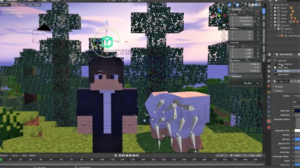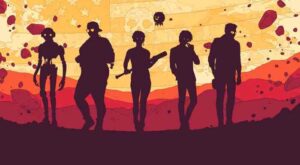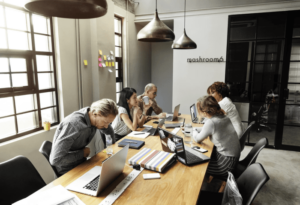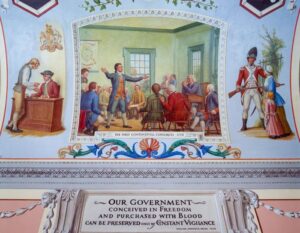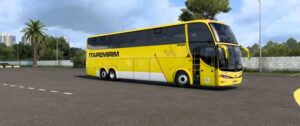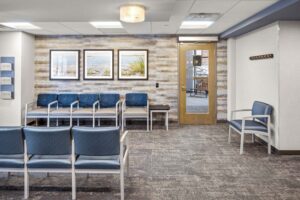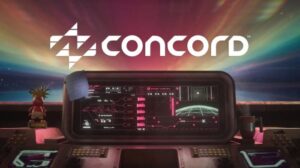How to Use 3D Minecraft in the Classroom: Benefits and Ideas – it’s not just about building blocks, it’s about building minds. Minecraft, the sandbox game that’s captured the imaginations of millions, is now finding its way into classrooms across the globe.
Beyond the fun and engaging gameplay, lies a powerful educational tool with the potential to transform the learning experience for students of all ages.
From fostering creativity and problem-solving skills to promoting collaboration and critical thinking, 3D Minecraft offers a unique platform for exploration and discovery. The open-ended nature of the game allows students to experiment, innovate, and develop essential 21st-century skills that are crucial for success in today’s world.
Introduction to 3D Minecraft in the Classroom
Minecraft, a popular video game known for its open-world sandbox environment, has transcended its status as a mere entertainment platform and has become a powerful educational tool. Its intuitive gameplay, creative freedom, and limitless possibilities have made it a valuable resource for educators looking to engage students and foster critical thinking skills.D Minecraft, in particular, offers a unique advantage in the classroom by providing a three-dimensional space for students to explore, build, and interact.
This immersive environment allows for more realistic simulations and collaborative projects, enhancing the learning experience.
Advantages of Using 3D Minecraft in the Classroom
The use of 3D Minecraft in the classroom presents numerous advantages, making it a compelling tool for educators.
- Engaging and Interactive Learning:3D Minecraft’s interactive nature fosters active participation and engagement, making learning more enjoyable and memorable for students.
- Visual Learning and Spatial Reasoning:The three-dimensional environment enhances visual learning by providing a tangible representation of concepts. Students can manipulate objects, build structures, and explore spaces, developing their spatial reasoning skills.
- Collaborative Learning and Teamwork:3D Minecraft encourages collaboration, allowing students to work together on projects, communicate ideas, and learn from each other.
- Problem-Solving and Critical Thinking:The game’s open-ended nature and challenges promote problem-solving and critical thinking skills. Students must analyze situations, devise strategies, and overcome obstacles, developing their analytical abilities.
- Creative Expression and Innovation:3D Minecraft provides a platform for creative expression and innovation. Students can design and build structures, create worlds, and experiment with different ideas, fostering their imagination and ingenuity.
How 3D Minecraft Enhances Learning Experiences
D Minecraft can enhance learning experiences in a variety of ways, making education more engaging and effective.
Bringing Minecraft’s 3D world into the classroom can be a game-changer, offering hands-on learning experiences and engaging students in creative problem-solving. To get started, you’ll need to download the Minecraft Pocket Edition (PE) app, which you can find by following these simple steps: How to Download 3D Minecraft for Pocket Edition (PE).
Once you’ve got it downloaded, the possibilities are endless – from building virtual cities to designing complex structures, your students can learn by doing in a way that’s both fun and educational.
- Simulating Real-World Scenarios:3D Minecraft can be used to simulate real-world scenarios, such as building a city, designing a house, or exploring a historical site. This hands-on experience provides a deeper understanding of concepts and promotes practical application of knowledge.
- Visualizing Abstract Concepts:Abstract concepts, such as geometry, physics, or coding, can be made more tangible and understandable through 3D Minecraft. Students can build models, experiment with forces, or create simple programs within the game, making these concepts more relatable and engaging.
- Differentiated Instruction:3D Minecraft allows for differentiated instruction, catering to the diverse learning needs of students. Students can work at their own pace, explore different areas of interest, and collaborate with peers at various levels.
- Assessment and Feedback:3D Minecraft projects can be used for assessment purposes, providing educators with insights into students’ understanding, creativity, and problem-solving abilities. The game’s collaborative nature also allows for peer feedback and constructive criticism.
Benefits of Using 3D Minecraft
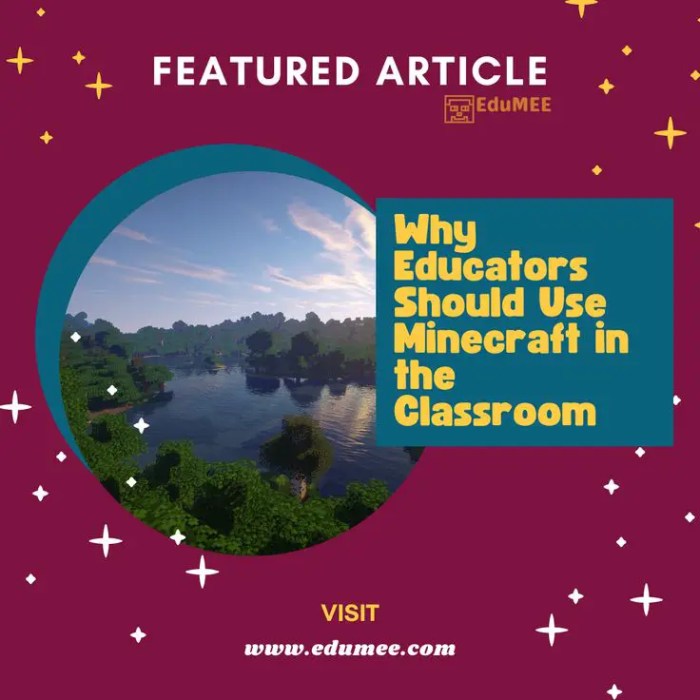
Minecraft, in its 3D format, offers a unique learning environment that goes beyond traditional classroom settings. It provides a platform for students to engage in creative exploration, develop problem-solving skills, and collaborate effectively. The immersive nature of 3D Minecraft allows students to visualize concepts, experiment with ideas, and build upon their understanding in a hands-on, interactive manner.
Fostering Creativity and Problem-Solving Skills
Minecraft’s open-ended nature empowers students to think outside the box and explore their creative potential. It allows them to design, build, and modify structures, environments, and even entire worlds. The freedom to experiment and create without limitations encourages innovation and helps students develop a strong sense of ownership over their projects.
- Building and Designing:Students can use blocks to build intricate structures, from simple houses to complex castles, showcasing their creativity and architectural skills. They can also experiment with different materials and designs, learning about the properties and limitations of various building elements.
- Solving Challenges:Minecraft presents numerous challenges that require students to think critically and apply their problem-solving skills. For example, they may need to find resources, navigate complex environments, or overcome obstacles, fostering their ability to analyze situations, strategize, and find solutions.
- Resource Management:Minecraft requires students to manage resources effectively. They must collect, store, and use resources wisely, learning the importance of planning, prioritization, and efficient allocation. This helps them develop valuable skills in resource management and decision-making.
Promoting Collaboration and Teamwork
D Minecraft provides a collaborative platform for students to work together on projects, fostering communication, teamwork, and social interaction. It encourages students to share ideas, contribute to a common goal, and learn from each other’s perspectives.
- Shared Worlds:Students can collaborate on building projects in shared worlds, working together to create intricate structures, landscapes, or even entire cities. This encourages them to communicate effectively, negotiate roles, and coordinate their efforts to achieve a common objective.
- Role-Playing:Minecraft’s open-ended nature allows students to engage in role-playing activities, where they can take on different roles and work together to solve problems or complete tasks. This promotes communication, negotiation, and teamwork, as they learn to collaborate effectively to achieve shared goals.
- Shared Learning:Students can learn from each other’s experiences and perspectives, sharing ideas, strategies, and solutions. This collaborative learning environment encourages peer support, knowledge sharing, and a sense of community within the classroom.
Encouraging Critical Thinking and Spatial Reasoning
Minecraft’s 3D environment encourages students to think critically about spatial relationships, plan strategies, and solve problems in a multi-dimensional space. It helps them develop their spatial reasoning skills, which are essential for various fields, including architecture, engineering, and design.
- Spatial Awareness:Minecraft’s 3D environment requires students to visualize and understand spatial relationships, allowing them to navigate complex landscapes, plan structures, and understand the impact of their actions on the surrounding environment.
- Problem-Solving in 3D:Students must solve problems that involve spatial reasoning, such as finding the shortest path to a destination, building structures that withstand environmental forces, or designing efficient transportation systems.
- Strategic Thinking:Minecraft challenges students to think strategically, anticipating potential problems, planning for contingencies, and making decisions based on spatial understanding. This helps them develop critical thinking skills that are valuable in various academic and professional settings.
Ideas for Integrating 3D Minecraft in the Classroom
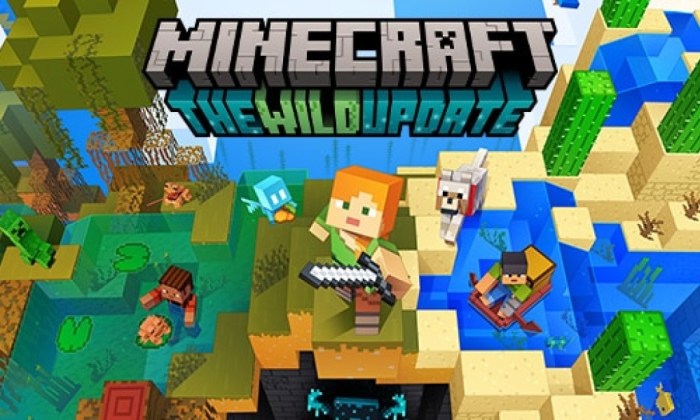
Integrating 3D Minecraft into the classroom can create a dynamic and engaging learning environment. The possibilities are endless, as Minecraft’s open-ended nature allows for exploration and creativity across various subjects.
Lesson Plans and Activities Using 3D Minecraft
This section will explore various lesson plans and activities that utilize 3D Minecraft to enhance learning.
- Building Historical Structures:Students can recreate historical landmarks like the Great Wall of China or the pyramids of Giza. This activity promotes research, understanding of scale, and spatial reasoning.
- Designing Sustainable Cities:Students can create eco-friendly cities with renewable energy sources, efficient transportation systems, and green spaces. This activity encourages critical thinking about urban planning and environmental sustainability.
- Simulating Scientific Concepts:Students can build models of atoms, solar systems, or ecosystems to visualize and understand scientific concepts. This activity fosters scientific literacy and hands-on learning.
- Storytelling and Role-Playing:Students can create narratives, role-play historical events, or write and perform plays in a Minecraft environment. This activity encourages creativity, collaboration, and communication skills.
- Problem-Solving and Critical Thinking:Students can solve puzzles, design and build machines, or create complex structures to overcome challenges within the Minecraft world. This activity develops problem-solving skills and critical thinking.
Integrating 3D Minecraft Across Different Subject Areas
This section explores how 3D Minecraft can be integrated across different subject areas.
- Math:Students can use Minecraft to explore geometry, measurement, and spatial reasoning by building structures, measuring distances, and calculating volumes.
- Science:Students can build models of cells, atoms, or ecosystems to understand scientific concepts. They can also conduct experiments and collect data within the Minecraft world.
- History:Students can recreate historical events, build ancient civilizations, or explore historical landmarks in a 3D environment. This helps them understand historical context and visualize the past.
- Language Arts:Students can create narratives, write stories, or role-play historical events within the Minecraft world. This fosters creativity and communication skills.
- Social Studies:Students can build and explore different cultures, learn about geography, and understand social dynamics through Minecraft’s world-building capabilities.
- Art:Students can create sculptures, paintings, and installations within the Minecraft environment. This allows for creative expression and exploration of artistic concepts.
- Technology:Students can learn about coding, programming, and game design by using Minecraft’s modding tools. This introduces them to the world of computer science and technology.
Creating Engaging and Interactive Learning Experiences
This section provides strategies for creating engaging and interactive learning experiences using 3D Minecraft.
- Set clear learning objectives:Ensure that every Minecraft activity has a specific educational goal to guide student learning. This helps to ensure that the activity is relevant and meaningful.
- Provide scaffolding and support:Offer guidance and support to students as they navigate the Minecraft environment and complete tasks. This can include providing tutorials, resources, and opportunities for collaboration.
- Encourage creativity and exploration:Allow students to experiment, take risks, and explore different possibilities within the Minecraft world. This fosters innovation and a love for learning.
- Use Minecraft’s built-in tools and features:Leverage Minecraft’s tools, such as redstone circuits, command blocks, and mods, to enhance learning and create engaging challenges.
- Facilitate collaboration and communication:Encourage students to work together, share ideas, and learn from each other. This promotes teamwork and communication skills.
- Integrate assessment strategies:Use various assessment methods, such as observation, student presentations, and project evaluations, to assess student learning in a Minecraft environment.
Implementation Strategies for 3D Minecraft in the Classroom: How To Use 3D Minecraft In The Classroom: Benefits And Ideas
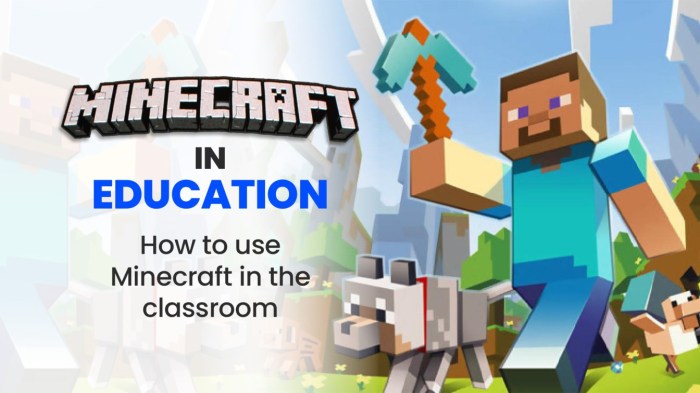
Implementing 3D Minecraft in the classroom requires careful planning and execution to maximize its educational potential. This section provides practical tips for setting up and managing 3D Minecraft in the classroom, creating a safe and positive learning environment, and assessing student learning within these immersive environments.
Setting Up and Managing 3D Minecraft in the Classroom
Effective implementation of 3D Minecraft in the classroom necessitates careful planning and execution to ensure a smooth and productive learning experience.
- Hardware and Software Requirements:Before introducing 3D Minecraft, ensure that your classroom has sufficient computing resources, including devices capable of running the game smoothly and a stable internet connection. The number of students using 3D Minecraft at once may influence the hardware requirements.
For example, a classroom with 20 students may require more powerful computers or a dedicated server to handle the workload. It is also essential to have the appropriate software installed, including the Minecraft client and any necessary mods or plugins.
- Minecraft Account Management:Consider creating student accounts for Minecraft using a school-wide system, such as a learning management platform (LMS), to manage access and monitor student activity. This method allows teachers to assign specific roles and permissions to students, such as “student” or “teacher,” enabling controlled access to features like editing worlds or creating new ones.
Additionally, teachers can use these accounts to monitor student progress and provide feedback within the Minecraft environment.
- Creating a Dedicated Minecraft Server:Setting up a dedicated Minecraft server for your classroom can offer greater control over the learning environment. This server allows teachers to create custom worlds with specific learning objectives and to manage player permissions, ensuring a focused learning experience.
Furthermore, a dedicated server enables teachers to track student activity and progress, providing valuable insights into student learning and engagement.
- Developing Clear Expectations and Guidelines:Before starting a 3D Minecraft project, clearly communicate expectations and guidelines to students. These guidelines should cover appropriate behavior within the Minecraft world, acceptable language, and expectations for collaboration and teamwork. Furthermore, setting clear expectations regarding the use of mods and plugins ensures a consistent and productive learning environment.
Creating a Safe and Positive Learning Environment in 3D Minecraft
Establishing a safe and positive learning environment in 3D Minecraft is crucial for fostering student engagement and maximizing the educational benefits of the platform.
- Promoting Respect and Inclusivity:Encourage students to treat each other with respect and to be inclusive of all classmates. Emphasize the importance of using respectful language and avoiding any form of bullying or harassment. Implementing clear guidelines and consequences for inappropriate behavior can further promote a safe and welcoming learning environment.
- Encouraging Collaboration and Teamwork:Design projects and activities that encourage students to collaborate and work together. This fosters teamwork skills and promotes a sense of community within the Minecraft world. By encouraging students to share ideas, build together, and solve problems collaboratively, you can cultivate a positive and supportive learning environment.
- Using Moderation Tools and Features:Utilize Minecraft’s moderation tools and features to ensure a safe and positive learning environment. This includes features like chat moderation, player reporting, and server settings that control access to specific features or content. By using these tools effectively, teachers can proactively monitor student activity and address any concerns promptly.
Assessing Student Learning in 3D Minecraft Environments
Assessing student learning within 3D Minecraft environments requires creative approaches that capture the unique skills and knowledge students develop through these immersive experiences.
- Observing and Documenting Student Activity:Regularly observe students’ interactions within the Minecraft world, documenting their progress and achievements. This can involve observing their building techniques, problem-solving strategies, and collaboration skills.
- Using In-Game Assessments:Design in-game assessments that assess specific learning objectives. This can involve challenges, quizzes, or tasks that require students to apply their knowledge and skills within the Minecraft environment. For example, a history lesson could involve building a historical landmark, requiring students to research and apply their knowledge to the project.
- Analyzing Student Projects and Creations:Evaluate student projects and creations, focusing on their creativity, problem-solving skills, and understanding of the subject matter. For example, a science lesson could involve students building a model of the solar system, allowing teachers to assess their understanding of planetary orbits and distances.
- Utilizing Portfolios and Reflective Writing:Encourage students to document their learning journey through portfolios and reflective writing. This allows students to reflect on their progress, challenges, and successes within the Minecraft environment, fostering self-awareness and critical thinking.
Resources and Tools for 3D Minecraft in the Classroom
Unlocking the full potential of 3D Minecraft in the classroom requires access to a treasure trove of resources and tools. This section delves into the world of educational materials, online communities, and dedicated software designed to enhance the Minecraft learning experience.
Minecraft Education Edition
Minecraft Education Edition is a specially designed version of Minecraft tailored for educational settings. It offers a range of features that empower educators to create engaging and interactive learning experiences. Here’s a glimpse into its key features:* Teacher-friendly interface:The platform provides a user-friendly interface that allows teachers to manage classrooms, assign projects, and monitor student progress easily.
Curriculum-aligned content
Minecraft Education Edition offers access to a library of curriculum-aligned lessons and activities covering various subjects, including STEM, social studies, and language arts.
Collaboration tools
The platform enables students to collaborate on projects in real-time, fostering teamwork and communication skills.
Assessment tools
Teachers can track student progress and assess their understanding through built-in assessment tools.
Educational Resources and Tools
Beyond Minecraft Education Edition, a plethora of resources and tools can further enhance your Minecraft learning journey.
Websites and Tutorials
- Minecraft Education Edition Website:This official website provides comprehensive information about the platform, including curriculum resources, tutorials, and support materials.
- Minecraft Education YouTube Channel:This channel features a vast collection of videos covering various aspects of Minecraft Education Edition, including tutorials, lesson ideas, and student projects.
- Teachers Pay Teachers:This online marketplace offers a wide range of Minecraft-themed lesson plans, activities, and resources created by educators.
Online Communities
- Minecraft Education Community Forum:This forum serves as a platform for educators to connect, share ideas, and seek support from other Minecraft Education Edition users.
- Minecraft Education Twitter:Follow the official Minecraft Education Twitter account for updates, news, and engaging discussions about using Minecraft in the classroom.
Additional Tools, How to Use 3D Minecraft in the Classroom: Benefits and Ideas
- Code.org:This platform provides free coding tutorials that can be integrated with Minecraft, enabling students to learn coding concepts through hands-on experiences.
- Tynker:This online coding platform offers a variety of Minecraft-themed coding challenges and projects, allowing students to explore computational thinking and problem-solving skills.
- Scratch:This visual programming language can be used to create mods and custom content for Minecraft, empowering students to personalize their learning experience.
Summary
Integrating 3D Minecraft into the classroom can be a game-changer, literally. By leveraging its engaging nature and educational potential, teachers can create immersive learning environments that captivate students, ignite their curiosity, and empower them to become active participants in their own education.
So, ditch the textbooks, fire up Minecraft, and prepare to witness the magic of learning unfold in a whole new dimension.
